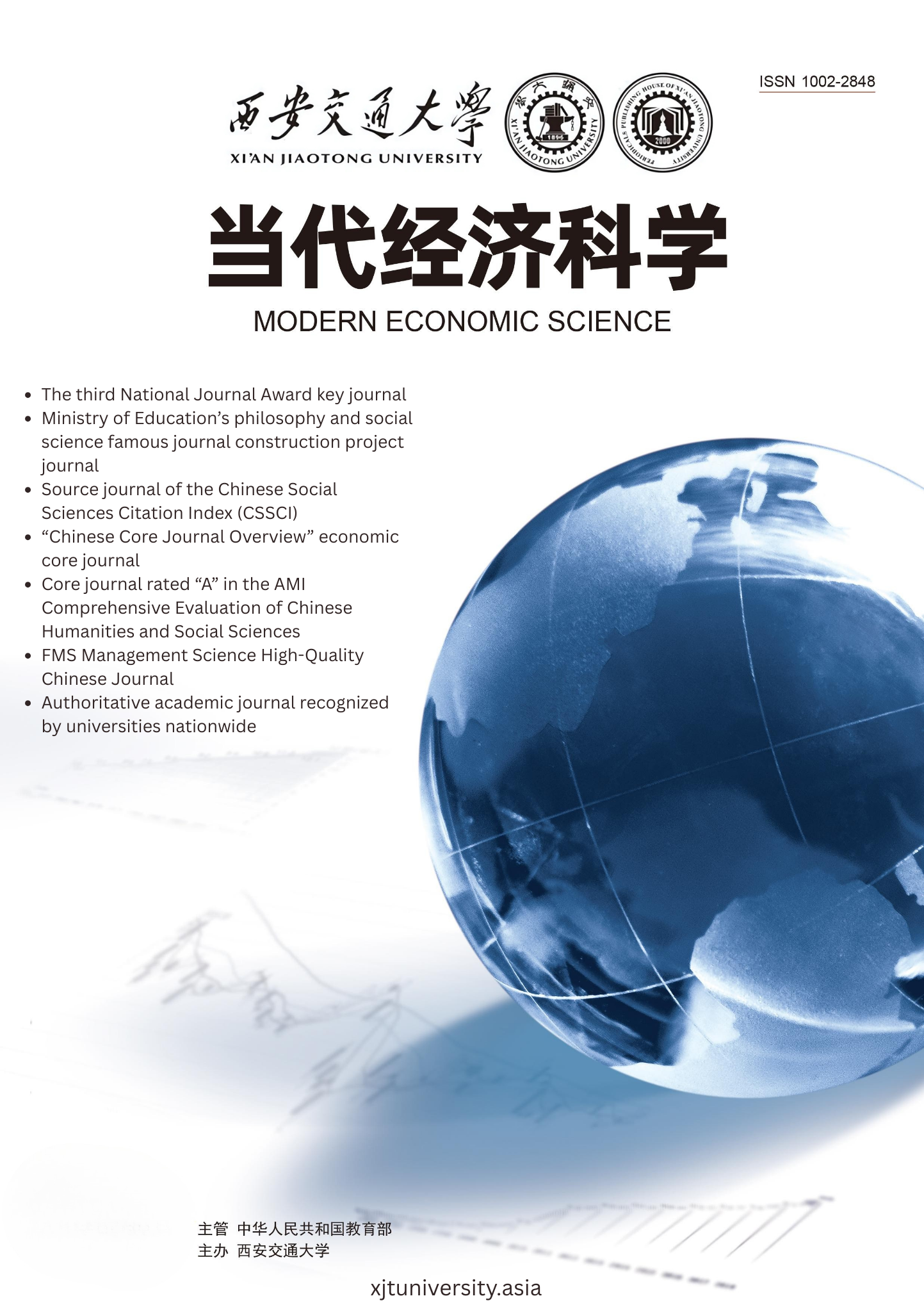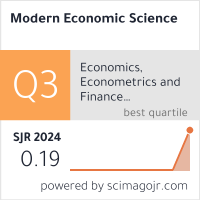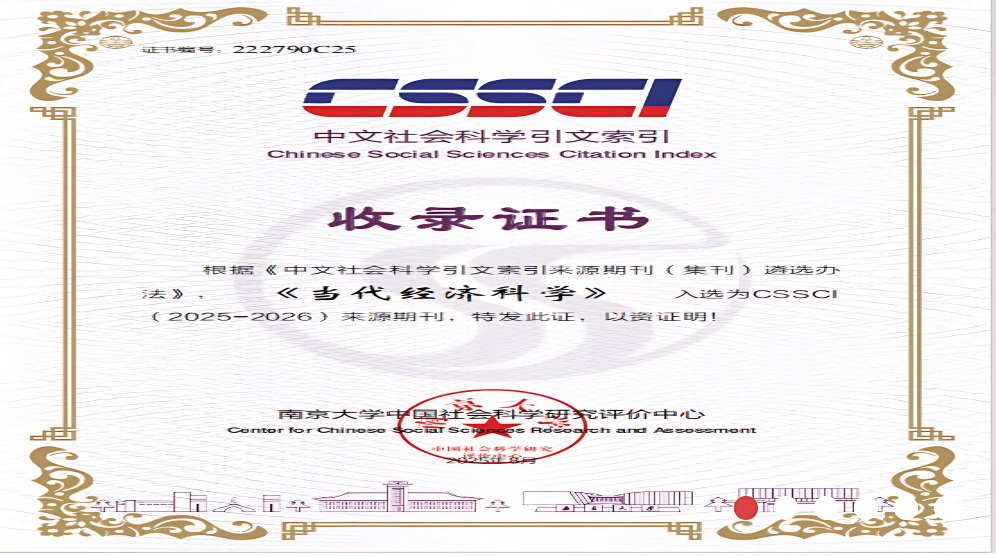Does GenAI as a personal resource improve employee performance and engagement in the workplace?
DOI:
https://doi.org/10.20069/mes.v47i5.72Keywords:
generative AI, trust, user experience, work engagement, employee performance, JD–R, TAM, TRIAbstract
This study examines whether generative AI (GenAI) can operate as a personal resource that enhances employee performance by strengthening user experience, trust, and work engagement. It tests if trust mediates the link between GenAI user experience and engagement and, in turn, performance. An explanatory sequential mixed‐methods design is used. Study 1 surveys 251 Indonesian professionals who use GenAI at work and estimates a covariance-based structural equation model. Constructs draw on TRI (optimism, innovativeness), TAM (usefulness, ease of use), trust, work engagement and employee performance. Study 2 gathers expert insights from 69 full professors in management to interpret and enrich the quantitative results. Optimism and innovativeness positively influence GenAI user experience, with optimism showing the stronger effect. User experience significantly increases trust, and trust significantly predicts work engagement. The direct path from user experience to engagement is not significant; instead, trust fully mediates this relationship. Work engagement, in turn, significantly improves employee performance. Experts corroborate the centrality of trust, emphasizing reliability, transparency, and fit-for-purpose use as prerequisites for sustained productivity gains. Cross-sectional data limit causal inference; future longitudinal and cross-cultural studies are encouraged. Extending the model to incorporate JD–R “loss cycle” variables (e.g., job demands, technostress, exhaustion) would deepen understanding of boundary conditions. Organizations should invest in capability building, clear guardrails, and verification workflows; vendors should improve transparency, provenance cues and controllability to earn user trust. Leaders play a pivotal role in positioning GenAI as an assistive resource and in instituting quality checks that convert usage into engagement and performance. The paper integrates TRI and TAM within a JD–R lens to show that trust is the decisive mechanism translating GenAI experience into engagement and performance. It reframes GenAI as a personal resource whose value materializes only when trust is deliberately cultivated.
Downloads
References
Acemoglu, D., Johnson, S., & Viswanath, K. (2023). Why the power of technology rarely goes to the people. MIT Sloan Management Review, 64(4), 1–4.
Anggara, A. A., Aryoko, Y. P., Dewandaru, R. O., Kharismasyah, A. Y., & Fatchan, I. N. (2025). Does maintaining resources, diversification, and internationalization matter for achieving high firm performance? A sustainable competitiveness strategy for China Taipei firms. Sustainability, 17(4), 1576. https://doi.org/10.3390/su17041576
Babina, T., Fedyk, A., He, A., & Hodson, J. (2024, January). Artificial intelligence, firm growth, and product innovation. Journal of Financial Economics, 151, 103745. https://doi.org/10.1016/j.jfineco.2023.103745
Bachmann, R., & Zaheer, A. (Eds.). (2006). Handbook of trust research. Edward Elgar Publishing.
Bakker, A. B., Demerouti, E., & Sanz-Vergel, A. (2023). Job demands–resources theory: Ten years later. Annual Review of Organizational Psychology and Organizational Behavior, 10(1), 25–53. https://doi.org/10.1146/annurev-orgpsych-120920
Bankins, S., Ocampo, A. C., Marrone, M., Restubog, S. L. D., & Woo, S. E. (2023). A multilevel review of artificial intelligence in organizations: Implications for organizational behavior research and practice. Journal of Organizational Behavior, 45(2), 159–182. https://doi.org/10.1002/job.2735
Baron, R. M., & Kenny, D. A. (1986). The moderator–mediator variable distinction in social psychological research: Conceptual, strategic, and statistical considerations. Journal of Personality and Social Psychology, 51(6), 1173–1182. https://doi.org/10.1037/0022-3514.51.6.1173
Barrett, J. A. M., Jaakkola, E., Heller, J., & Bruggen, E. C. (2024). Customer engagement in utilitarian vs. hedonic service contexts. Journal of Service Research. Advance online publication. https://doi.org/10.1177/10946705241242901
Bedué, P., & Fritzsche, A. (2022). Can we trust AI? An empirical investigation of trust requirements and guide to successful AI adoption. Journal of Enterprise Information Management, 35(2), 530–549. https://doi.org/10.1108/JEIM-06-2020-0233
Brodie, R. J., Hollebeek, L. D., Jurić, B., & Ilić, A. (2011). Customer engagement: Conceptual domain, fundamental propositions, and implications for research. Journal of Service Research, 14(3), 252–271. https://doi.org/10.1177/1094670511411703
Brynjolfsson, E., Li, D., Raymond, L. R., Acemoglu, D., Autor, D., Axelrod, A., Dillon, E., Enam, Z., Garicano, L., Frankel, A., Manning, S., Mullainathan, S., Pierson, E., Stern, S., Rambachan, A., Van Reenen, J., Sadun, R., Shaw, K., & Stanton, C. (2023). Generative AI at work (NBER Working Paper). National Bureau of Economic Research.
Candrian, C., & Scherer, A. (2022). Rise of the machines: Delegating decisions to autonomous AI. Computers in Human Behavior, 134, 107308. https://doi.org/10.1016/j.chb.2022.107308
Chan, X. W., Kalliath, T., Brough, P., O’Driscoll, M., Siu, O. L., & Timms, C. (2017). Self-efficacy and work engagement: Test of a chain model. International Journal of Manpower, 38(6), 819–834. https://doi.org/10.1108/IJM-11-2015-0189
Chatterjee, S., Chaudhuri, R., Vrontis, D., Thrassou, A., & Ghosh, S. K. (2021). Adoption of artificial intelligence-integrated CRM systems in agile organizations in India. Technological Forecasting and Social Change, 168, 120783. https://doi.org/10.1016/j.techfore.2021.120783
Chatterjee, S., Rana, N. P., Dwivedi, Y. K., & Baabdullah, A. M. (2021). Understanding AI adoption in manufacturing and production firms using an integrated TAM–TOE model. Technological Forecasting and Social Change, 170, 120880. https://doi.org/10.1016/j.techfore.2021.120880
Chen, Q., Lu, Y., Gong, Y., & Xiong, J. (2023). Can AI chatbots help retain customers? Impact of AI service quality on customer loyalty. Internet Research, 33(6), 2205–2243. https://doi.org/10.1108/INTR-09-2021-0686
Christian, M. S., & Slaughter, J. E. (2007). Work engagement: A meta-analytic review and directions for research in an emerging area [Conference presentation]. Academy of Management Annual Meeting. https://doi.org/10.5465/ambpp.2007.26536346
Chughtai, A. A., & Buckley, F. (2008). Work engagement and its relationship with state and trait trust: A conceptual analysis. Journal of Behavioral and Applied Management, 10(1), 47. https://doi.org/10.21818/001c.17170
Chui, M., Hazan, E., Roberts, R., Singla, A., Smaje, K., Sukharevsky, A., Yee, L., & Zemmel, R. (2023). The economic potential of generative AI: The next productivity frontier. McKinsey & Company.
Consiglio, C., Borgogni, L., Di Tecco, C., & Schaufeli, W. B. (2016). What makes employees engaged with their work? The role of self-efficacy and employees’ perceptions of social context over time. Career Development International, 21(2), 125–143. https://doi.org/10.1108/CDI-03-2015-0045
Creswell, J. W., & Poth, C. N. (2016). Qualitative inquiry and research design: Choosing among five approaches (4th ed.). Sage.
Czarnitzki, D., Fernández, G. P., & Rammer, C. (2023). Artificial intelligence and firm-level productivity. Journal of Economic Behavior & Organization, 211(2), 188–205. https://doi.org/10.1016/j.jebo.2023.05.008
Davis, F. D. (1989). Perceived usefulness, perceived ease of use, and user acceptance of information technology. MIS Quarterly, 13(3), 319–340. https://doi.org/10.2307/249008
Debusscher, J., Hofmans, J., & De Fruyt, F. (2016). Do personality states predict momentary task performance? The moderating role of personality variability. Journal of Occupational and Organizational Psychology, 89(2), 330–351. https://doi.org/10.1111/joop.12126
Deci, E. L., & Ryan, R. M. (1985). The general causality orientations scale: Self-determination in personality. Journal of Research in Personality, 19(2), 109–134. https://doi.org/10.1016/0092-6566(85)90023-6
Demerouti, E., Nachreiner, F., Bakker, A. B., & Schaufeli, W. B. (2001). The job demands–resources model of burnout. Journal of Applied Psychology, 86(3), 499–512. https://doi.org/10.1037/0021-9010.86.3.499
Dewandaru, R. O., Fatchan, I. N., Kharismasyah, A. Y., Aryoko, Y. P., & Anggara, A. A. (2025). Reflection on accounting historiography: From double entry to ethics, conservatism, and sustainability. Zhurnal Belorusskogo Gosudarstvennogo Universiteta. Istoriya, 7(3), 44–59.
DeWitt, T., Nguyen, D. T., & Marshall, R. (2008). Exploring customer loyalty following service recovery: The mediating effects of trust and emotions. Journal of Service Research, 10(3), 269–281. https://doi.org/10.1177/1094670507310767
Dwivedi, Y. K., Kshetri, N., Hughes, L., Slade, E. L., Jeyaraj, A., Kar, A. K., Baabdullah, A. M., Koohang, A., Raghavan, V., Ahuja, M., Albanna, H., Albashrawi, M. A., Al-Busaidi, A. S., Balakrishnan, J., Barlette, Y., Basu, S., Bose, I., Brooks, L., Buhalis, D., … Wright, R. (2023). “So what if ChatGPT wrote it?” Multidisciplinary perspectives on opportunities, challenges and implications of generative conversational AI for research, practice and policy. International Journal of Information Management, 71, 102642. https://doi.org/10.1016/j.ijinfomgt.2023.102642
Feuerriegel, S., Hartmann, J., Janiesch, C., & Zschech, P. (2024). Generative AI. Business & Information Systems Engineering, 66(1), 111–126. https://doi.org/10.1007/s12599-023-00834-7
Flavián, C., Pérez-Rueda, A., Belanche, D., & Casaló, L. V. (2022). Intention to use analytical artificial intelligence (AI) in services: The effect of technology readiness and awareness. Journal of Service Management, 33(2), 293–320. https://doi.org/10.1108/JOSM-10-2020-0378
Fornell, C., & Larcker, D. F. (1981). Evaluating structural equation models with unobservable variables and measurement error. Journal of Marketing Research, 18(1), 39–50. https://doi.org/10.1177/002224378101800313
Frank, D. A., Jacobsen, L. F., Søndergaard, H. A., & Otterbring, T. (2023). In companies we trust: Consumer adoption of artificial intelligence services and the role of trust in companies and AI autonomy. Information Technology & People, 36(8), 155–173. https://doi.org/10.1108/ITP-09-2022-0721
Gargiulo, M., & Ertug, G. (2006). The dark side of trust. In R. Bachmann & A. Zaheer (Eds.), Handbook of trust research (pp. 165–186). Edward Elgar.
Gkinko, L., & Elbanna, A. (2023). Designing trust: The formation of employees’ trust in conversational AI in the digital workplace. Journal of Business Research, 158, 113707. https://doi.org/10.1016/j.jbusres.2023.113707
Glikson, E., & Woolley, A. W. (2020). Human trust in artificial intelligence: Review of empirical research. Academy of Management Annals, 14(2), 627–660. https://doi.org/10.5465/annals.2018.0057
Hair, J. F., Black, W. C., Babin, B. J., & Anderson, R. E. (2010). Multivariate data analysis (7th ed.). Prentice Hall.
Hakanen, J. J., Bakker, A. B., & Schaufeli, W. B. (2006). Burnout and work engagement among teachers. Journal of School Psychology, 43(6), 495–513. https://doi.org/10.1016/j.jsp.2005.11.001
Hakanen, J. J., Schaufeli, W. B., & Ahola, K. (2008). The job demands–resources model: A three-year cross-lagged study of burnout, depression, commitment, and work engagement. Work & Stress, 22(3), 224–241. https://doi.org/10.1080/02678370802379432
Hayes, A. F. (2009). Beyond Baron and Kenny: Statistical mediation analysis in the new millennium. Communication Monographs, 76(4), 408–420. https://doi.org/10.1080/03637750903310360
Henseler, J., Ringle, C. M., & Sarstedt, M. (2015). A new criterion for assessing discriminant validity in variance-based structural equation modeling. Journal of the Academy of Marketing Science, 43(1), 115–135. https://doi.org/10.1007/s11747-014-0403-8
Imron, A., Anggara, A. A., Shih, I.-T., Lin, C. T., & Kaukab, M. E. (2025). Extended brand value competitiveness chain model: Building brand competitiveness in SMEs in Indonesia through digital brand learning. Modern Economic Science, 47(4), 113–140.
Imron, A., Kaukab, M. E., & Anggara, A. A. (2025). Does blockchain matter in Industry 4.0? A key driver of industry. Future Economics and Business Studies, 1(1), 1–20.
Kashive, N., Powale, L., & Kashive, K. (2021). Understanding user perception toward artificial intelligence (AI) enabled e-learning. The International Journal of Information and Learning Technology, 38(1), 1–19. https://doi.org/10.1108/IJILT-05-2020-0090
Kaukab, M. E., Anggara, A. A., & Imron, A. (2025). Business process transformation to maintain high performance: Driving an AI-based business value project. Current Perspective on Business Operations, 1(1), 1–20.
Kaukab, M. E., Anggara, A. A., & Jusoh, W. N. H. (2025). Bilateral foreign direct investment flows in similar Islamic countries: Alternative explanation for gross domestic product per capita difference effect. Fokus Bisnis: Media Pengkajian Manajemen dan Akuntansi, 24(1), 21–28.
Kellogg, K. C., Valentine, M. A., & Christin, A. (2020). Algorithms at work: The new contested terrain of control. Academy of Management Annals, 14(1), 366–410. https://doi.org/10.5465/annals.2018.0174
Kelly, S., Kaye, S. A., & Oviedo-Trespalacios, O. (2023). What factors contribute to the acceptance of artificial intelligence? A systematic review. Telematics and Informatics, 77, 101925. https://doi.org/10.1016/j.tele.2022.101925
Laato, S., Tiainen, M., Najmul Islam, A. K. M., & Mäntymäki, M. (2021). How to explain AI systems to end users: A systematic literature review and research agenda. Internet Research, 32(7), 1–31. https://doi.org/10.1108/INTR-08-2021-0600
Ladhari, R. (2012). The lodging quality index: An independent assessment of validity and dimensions. International Journal of Contemporary Hospitality Management, 24(4), 628–652. https://doi.org/10.1108/09596111211226893
Lai, Y. L., & Lee, J. (2020). Integration of technology readiness index (TRI) into the technology acceptance model (TAM) for explaining behavior in adoption of BIM. Asian Education Studies, 5(2), 10. https://doi.org/10.20849/aes.v5i2.816
Levine, T. R., & McCornack, S. A. (1991). The dark side of trust: Conceptualizing and measuring types of communicative suspicion. Communication Quarterly, 39(4), 325–340. https://doi.org/10.1080/01463379109369809
Llorens, S., Schaufeli, W., Bakker, A. B., & Salanova, M. (2007). Does a positive gain spiral of resources, efficacy beliefs and engagement exist? Computers in Human Behavior, 23(1), 825–841. https://doi.org/10.1016/j.chb.2004.11.012
Marikyan, D., Papagiannidis, S., Rana, O., Ranjan, R., & Morgan, G. (2022, March). “Alexa, let’s talk about my productivity”: The impact of digital assistants on work productivity. Journal of Business Research, 142, 572–584. https://doi.org/10.1016/j.jbusres.2022.01.015
Maslach, C., Jackson, S., & Leiter, M. (1997). Maslach burnout inventory. Scarecrow Education.
Mayer, R. C., Davis, J. H., & Schoorman, F. D. (1995). An integrative model of organizational trust. Academy of Management Review, 20(3), 709–734.
Mazzetti, G., Robledo, E., Vignoli, M., Topa, G., Guglielmi, D., & Schaufeli, W. B. (2023). Work engagement: A meta-analysis using the job demands–resources model. Psychological Reports, 126(3), 1069–1107. https://doi.org/10.1177/00332941211051988
McKnight, D., Choudhury, V., & Kacmar, C. (2002). The impact of initial customer trust on intentions to transact with a web site: A trust building model. The Journal of Strategic Information Systems, 11(3–4), 297–323. https://doi.org/10.1016/S0963-8687(02)00020-3
Mu’ah, Hakim, M. B., Anggara, A. A., Ariefin, M. S., & Ramadhani, M. A. (2025). How does generative AI understand the phygital customer experience? A strategic retail decision-making approach using social listening methods. Modern Economic Science, 47(5), 126–143.
Noy, S., & Zhang, W. (2023). Experimental evidence on the productivity effects of generative artificial intelligence. Science, 381(6654), 187–192. https://doi.org/10.1126/science.adh2586
Nunnally, J. C., & Bernstein, I. H. (1994). Psychometric theory. McGraw-Hill.
Parasuraman, A. (2000). Technology readiness index (TRI): A multiple-item scale to measure readiness to embrace new technologies. Journal of Service Research, 2(4), 307–320. https://doi.org/10.1177/109467050024001
Parasuraman, A., & Colby, C. L. (2015). An updated and streamlined technology readiness index: TRI 2.0. Journal of Service Research, 18(1), 59–74. https://doi.org/10.1177/1094670514539730
Picazo Rodríguez, B., Verdú-Jover, A. J., Estrada-Cruz, M., & Gomez-Gras, J. M. (2024). Does digital transformation increase firms’ productivity perception? The role of technostress and work engagement. European Journal of Management and Business Economics, 33(2), 137–156. https://doi.org/10.1108/EJMBE-06-2022-0177
Rane, N. (2024). Role and challenges of ChatGPT, Gemini, and similar generative artificial intelligence in human resource management. Studies in Economics and Business Relations, 5(1), 11–23. https://doi.org/10.48185/sebr.v5i1.1001
Rogers, E. M. (2003). Diffusion of innovations (5th ed.). Free Press.
Salanova, M., Agut, S., & Peiró, J. M. (2005). Linking organizational resources and work engagement to employee performance and customer loyalty: The mediation of service climate. Journal of Applied Psychology, 90(6), 1217–1227. https://doi.org/10.1037/0021-9010.90.6.1217
Salanova, M., Bakker, A. B., & Llorens, S. (2006). Flow at work: Evidence for an upward spiral of personal and organizational resources. Journal of Happiness Studies, 7(1), 1–22. https://doi.org/10.1007/s10902-005-8854-8
Samuel, J., Kashyap, R., Samuel, Y., & Pelaez, A. (2022). Adaptive cognitive fit: Artificial intelligence augmented management of information facets and representations. International Journal of Information Management, 65, 102505. https://doi.org/10.1016/j.ijinfomgt.2022.102505
Schaufeli, W. B., Salanova, M., González-Romá, V., & Bakker, A. B. (2002). The measurement of engagement and burnout: A two-sample confirmatory factor analytic approach. Journal of Happiness Studies, 3(1), 71–92. https://doi.org/10.1023/A:1015630930326
Schepman, A., & Rodway, P. (2023). The general attitudes towards artificial intelligence scale (GAAIS): Confirmatory validation and associations with personality, corporate distrust, and general trust. International Journal of Human–Computer Interaction, 39(13), 2724–2741. https://doi.org/10.1080/10447318.2022.2085400
Skinner, D., Dietz, G., & Weibel, A. (2014). The dark side of trust: When trust becomes a “poisoned chalice.” Organization, 21(2), 206–224. https://doi.org/10.1177/1350508412473866
Sulistyandari, Anggara, A. A., Liu, C.-L., Kaukab, M. E., & Alam, M. M. (2025). Evaluating firm value and eco-efficiency with an environmental footprint model in the coal mining industry: Further evidence from G20 countries. Modern Economic Science, 47(5), 105–125.
Umair, A., Conboy, K., & Whelan, E. (2023). Examining technostress and its impact on worker well-being in the digital gig economy. Internet Research, 33(7), 206–242. https://doi.org/10.1108/INTR-03-2022-0214
Wang, C., Ahmad, S. F., Bani Ahmad Ayassrah, A. Y. A., Awwad, E. M., Irshad, M., Ali, Y. A., Al-Razgan, M., Khan, Y., & Han, H. (2023). An empirical evaluation of technology acceptance model for artificial intelligence in e-commerce. Heliyon, 9(8), e18349. https://doi.org/10.1016/j.heliyon.2023.e18349
Wijayati, D. T., Rahman, Z., Fahrullah, A., Rahman, M. F. W., Arifah, I. D. C., & Kautsar, A. (2022). A study of artificial intelligence on employee performance and work engagement: The moderating role of change leadership. International Journal of Manpower, 43(2), 486–512. https://doi.org/10.1108/IJM-07-2021-0423
Wolfinbarger, M., & Gilly, M. C. (2003). eTailQ: Dimensionalizing, measuring and predicting etail quality. Journal of Retailing, 79(3), 183–198. https://doi.org/10.1016/S0022-4359(03)00034-4
Xavier Molina-Morales, F., Teresa Martínez-Fernández, M., & Torlo, V. J. (2011). The dark side of trust: The benefits, costs and optimal levels of trust for innovation performance. Long Range Planning, 44(2), 118–133. https://doi.org/10.1016/j.lrp.2011.01.001
Yang, R., & Wibowo, S. (2022). User trust in artificial intelligence: A comprehensive conceptual framework. Electronic Markets, 32(4), 2053–2077. https://doi.org/10.1007/s12525-022-00592-6
Zhang, S., Meng, Z., Chen, B., Yang, X., & Zhao, X. (2021). Motivation, social emotion, and the acceptance of artificial intelligence virtual assistants—Trust-based mediating effects. Frontiers in Psychology, 12, 728495. https://doi.org/10.3389/fpsyg.2021.728495
Zhao, X., Lynch, J. G., & Chen, Q. (2010). Reconsidering Baron and Kenny: Myths and truths about mediation analysis. Journal of Consumer Research, 37(2), 197–206. https://doi.org/10.1086/651257
Downloads
Published
Issue
Section
License
Copyright (c) 2025 Suyoto Suyoto, Akhmad Darmawan, Fatmah Bagis, Ali Akbar Anggara

This work is licensed under a Creative Commons Attribution-NonCommercial 4.0 International License.













